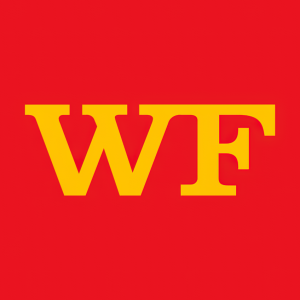Wells Fargo Investment Institute’s 2022 Midyear Outlook: ‘Faster, Further, and Fragile’
Wells Fargo Investment Institute (WFII) released its 2022 Midyear Outlook titled Faster, Further, and Fragile, forecasting a mild recession in the U.S. economy by the end of 2022 into early 2023. The report identifies key investment strategies amid market fragility, emphasizing diversifying portfolios and being defensive with equity exposure. WFII predicts modest equity gains in 2022, with potential for recovery in 2024 if inflation eases. Preferred assets include U.S. mid-cap equities, short-term investment-grade bonds, and alternative investments for downside risk mitigation.
- Forecasting modest equity gains by year-end 2022.
- Anticipates recovery in valuations and equity markets later in 2023 if inflation eases.
- Identifies strategic areas for investment, including U.S. large-cap and mid-cap equities.
- Expects a mild recession impacting earnings per share (EPS) growth in 2023.
- Notes risks associated with aggressive monetary policy by the Federal Reserve.

“Thus far, 2022 has been trying for investors, with negative year to date returns for both equities and bonds,” said
The report provides WFII’s economic and market forecasts, as well as the outlook and preferred areas of investment for each of the following asset groups:
-
Global equities: Slowing earnings per share (EPS) growth will be met with declining valuations, but will likely generate moderate year-end 2022 equity price gains from current levels. For 2023, expect a recession to shrink EPS, but market expectations for recovery later in 2023 should lift valuations and equity markets by year-end. We favor
U.S. large-cap andU.S. mid-cap equities over international equities and favor quality among equity sectors. -
Global fixed income: The
Federal Reserve has taken a decidedly more aggressive approach toward monetary policy, even as the window of opportunity to engineer an economic soft landing narrows. WFII prefers short-term and intermediate-term investment-grade maturities while interest rates have some room to rise. We prefer not to extend down the credit spectrum into high-yield fixed income. - Global real assets: Commodities had a strong start to the year, but gains are likely to moderate into year-end before accelerating again in 2023. For yield investors, we favor midstream energy C-corporations, and opportunities may arise in public real estate investment trusts.
- Global alternative investments: Expect Global Macro and Relative Value strategies to provide critical late-cycle diversification and, in the case of Relative Value, incremental income at a time when inflation-adjusted yields remain low. Credit stress is likely to build, which eventually may lead to investment opportunities in Event Driven and Private Debt strategies, which focus on special situations and distressed debt.
WFII’s analysis of current and emerging market conditions leads to the following top five portfolio ideas for the second half of the year:
- Build portfolio resilience with diversifiers.
- Be defensive on equity exposure late in an economic cycle.
- Add to fixed-income holdings judiciously in a rising-rate (and inflationary) environment.
- Match cash allocations to time horizon.
- Seek to mitigate downside risk with alternative investments, including hedge funds.
Learn how to join the WFII Midyear Outlook investor call today,
Investment and Insurance Products are: |
• Not Insured by the |
• Not a Deposit or Other Obligation of, or Guaranteed by, the Bank or Any Bank Affiliate |
• Subject to Investment Risks, Including Possible Loss of the Principal Amount Invested |
Risk Disclosure
Forecasts and targets are based on certain assumptions and on our current views of market and economic conditions, which are subject to change.
All investing involves risks, including the possible loss of principal. There can be no assurance that any investment strategy will be successful and meet its investment objectives. Investments fluctuate with changes in market and economic conditions and in different environments due to numerous factors, some of which may be unpredictable. Asset allocation and diversification do not guarantee investment returns or eliminate risk of loss. Each asset class has its own risk and return characteristics, which should be evaluated carefully before making any investment decision. The level of risk associated with a particular investment or asset class generally correlates with the level of return the investment or asset class might achieve. Some of the risks associated with the representative asset classes include: Stock markets, especially foreign markets, are volatile. Stock values may fluctuate in response to general economic and market conditions, the prospects of individual companies, and industry sectors. Foreign investing has additional risks including those associated with currency fluctuation, political and economic instability, and different accounting standards. These risks are heightened in emerging markets. Bonds are subject to interest rate, credit/default, liquidity, inflation and other risks. Prices tend to be inversely affected by changes in interest rates. The commodities markets are considered speculative, carry substantial risks, and have experienced periods of extreme volatility. Investing in a volatile and uncertain commodities market may cause a portfolio to rapidly increase or decrease in value which may result in greater share price volatility.
About
About
Additional information may be found at www.wellsfargo.com | Twitter: @WellsFargo.
Cautionary Statement about Forward-Looking Statements
This news release contains forward-looking statements about our future financial performance and business. Because forward-looking statements are based on our current expectations and assumptions regarding the future, they are subject to inherent risks and uncertainties. Do not unduly rely on forward-looking statements as actual results could differ materially from expectations. Forward-looking statements speak only as of the date made, and we do not undertake to update them to reflect changes or events that occur after that date. For information about factors that could cause actual results to differ materially from our expectations, refer to our reports filed with the
CAR-0622-01751
News Release Category: WF-ERS
View source version on businesswire.com: https://www.businesswire.com/news/home/20220615005266/en/
Media
Sarah.Kerr@wellsfargo.com
Source:
FAQ
What is Wells Fargo's 2022 Midyear Outlook report about?
What does Wells Fargo expect for the U.S. economy in 2023?
Which asset classes does Wells Fargo recommend in its Midyear Outlook?
How are equity markets expected to perform according to Wells Fargo's Outlook?







